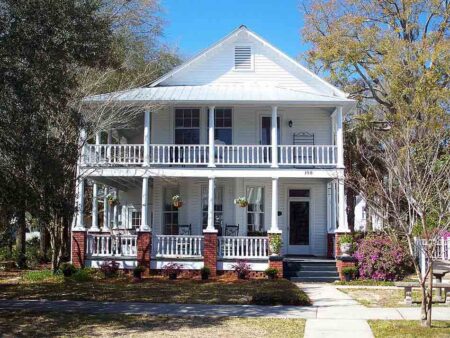NICEVILLE, Fla. — I’ve driven through a number of relatively new subdivisions in Okaloosa County this spring and I can easily pick out the centipedegrass lawns that will be declining next spring.
Right now, these lawns stand out as some of the darker green lawns. They’ve been over-fertilized. The lawn’s owner does not realize that this is a mistake. Short term, the lawn will look good. Long term, it will decline.
Fertilizing a centipedegrass lawn to create a dark green color will cause a condition called centipedegrass decline.
The causes for centipedegrass decline are complex but a major contributing factor is over-fertilization. If you wanted to induce this condition in a centipedegrass yard, all you need to do is to be a little heavy-handed with fertilizer. And, in a year or two, you will see classic centipedegrass decline – patches that turn yellow and then begin to die at spring green-up or shortly thereafter.
Centipedegrass has a naturally light green color. My advice is to fertilize centipedegrass sparingly, accept its light crabapple green color and low maintenance requirements.
Following this checklist can help prevent centipedegrass decline.
- Don’t apply fertilizer until warm spring weather is here to stay. Fertilizing before the last frost invites disaster. It’s best to wait until well into the month of April or May before fertilizing.
- Water immediately after the application in order to activate the fertilizer and prevent burning.
- Choose the fertilizer type carefully. Look for one that has about 30 percent of the total nitrogen in a slow-release form (listed as water-insoluble nitrogen, usually on the back of the bag). The product should contain about as much potassium (the third number on the bag) as it does nitrogen (the first number on the bag). Most people apply too much nitrogen and too little potassium.
- Avoid fertilizers that are high in nitrogen, yet contain low percentages of potassium.
- Avoid the use of high phosphorus-containing fertilizer. Phosphorus is the middle number listed on the fertilizer container. Excessively high levels of phosphorus in the soil have also been implicated in centipedegrass decline and the inability of the grass to take up iron and other micronutrients.
- Avoid heavily fertilizing a centipedegrass lawn. One or two light application(s) per year is/are the maximum a centipedegrass lawn will ever need.
- Never apply a high-nitrogen fertilizer after July.
If your centipedegrass lawn is already dark green, it’s a matter of time before the decline begins. Centipedegrass decline is prevented, not cured.
Here is a UF/IFAS Extension publication on centipedegrass, which includes more information on how to correctly fertilize a centipedegrass lawn. https://edis.ifas.ufl.edu/lh009
Larry Williams is the Extension horticulture agent with the Okaloosa County Cooperative Extension Service, University of Florida. Contact Larry at 689-5850 or email lwilliams@myokaloosa.com.





